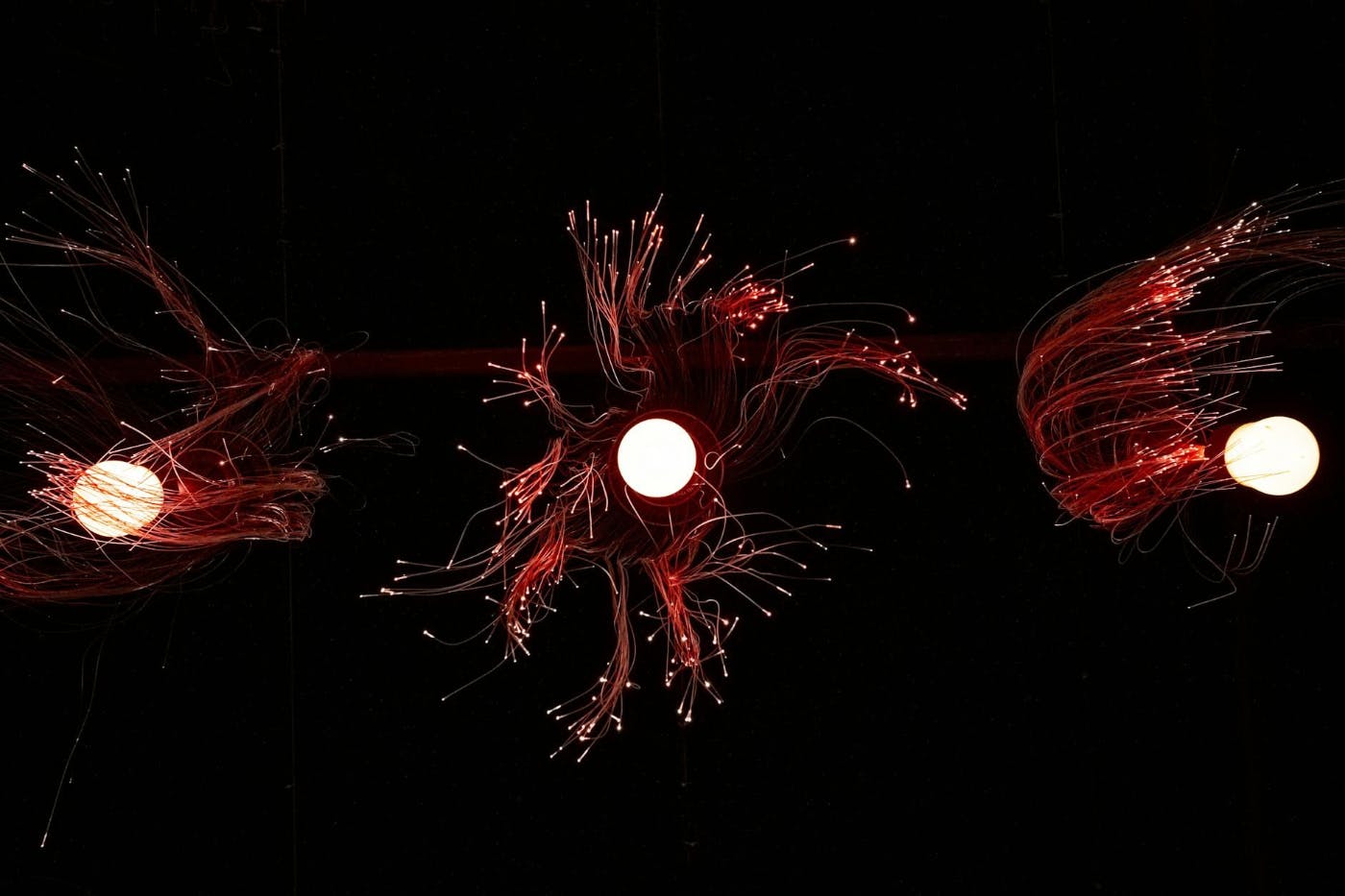This paper is available on arxiv under CC 4.0 license.
Authors:
(1) Terence Blésin, Institute of Physics, Swiss Federal Institute of Technology Lausanne (EPFL) & Center of Quantum Science and Engineering (EPFL);
(2) Wil Kao, Institute of Physics, Swiss Federal Institute of Technology Lausanne (EPFL) & Center of Quantum Science and Engineering (EPFL);
(3) Anat Siddharth, Institute of Physics, Swiss Federal Institute of Technology Lausanne (EPFL) & Center of Quantum Science and Engineering (EPFL);
(4) Alaina Attanasio, OxideMEMS lab, Purdue University;
(5) Hao Tian, OxideMEMS lab, Purdue University;
(6) Sunil A. Bhave, OxideMEMS lab, Purdue University;
(7) Tobias J. Kippenberg, Institute of Physics, Swiss Federal Institute of Technology Lausanne (EPFL) & Center of Quantum Science and Engineering (EPFL).
Table of Links
-
Results
Appendix F: Optimization of optical extraction efficiency
An optimal optical external coupling can be chosen to maximize the total conversion efficiency. Equation E9 can be rewritten in terms of quality factors by using the relation κ = ω/Q, which yields

For the optics, we have Qo = Qint + Qext, where we separate the intrinsic quality factor Qint, oftentimes fabricationlimited and hence not easily adjustable, from the external coupling quality factor Qex that can be readily engineered through coupler design. The optical extraction efficiency can thus be written in the form

where R = Qint/Qex and the total optical quality factor

The total efficiency in the low-cooperativity regime is then given by

where

For a given F, the optimal efficiency is achieved at the critical coupling condition Qex = Qint, or R = 1.
[1] H. Haus and W. Huang, Proceedings of the IEEE 79, 1505 (1991).
[2] T. Blésin, H. Tian, S. A. Bhave, and T. J. Kippenberg, Phys. Rev. A 104, 052601 (2021).
[3] A. Rueda, W. Hease, S. Barzanjeh, and J. M. Fink, npj Quantum Inf. 5, 1 (2019).
[4] C. Zhong, Z. Wang, C. Zou, M. Zhang, X. Han, W. Fu, M. Xu, S. Shankar, M. H. Devoret, H. X. Tang, and L. Jiang, Phys. Rev. Lett. 124, 010511 (2020).
[5] S. Krastanov, H. Raniwala, J. Holzgrafe, K. Jacobs, M. Lončar, M. J. Reagor, and D. R. Englund, Phys. Rev. Lett. 127, 040503 (2021).
[6] L.-M. Duan, M. D. Lukin, J. I. Cirac, and P. Zoller, Nature 414, 413 (2001).
[7] M. H. P. Pfeiffer, J. Liu, A. S. Raja, T. Morais, B. Ghadiani, and T. J. Kippenberg, Optica 5, 884 (2018).
[8] J. Liu, G. Huang, R. N. Wang, J. He, A. S. Raja, T. Liu, N. J. Engelsen, and T. J. Kippenberg, Nat. Commun. 12, 2236 (2021).
[9] H. Tian, J. Liu, B. Dong, J. C. Skehan, M. Zervas, T. J. Kippenberg, and S. A. Bhave, Nat. Commun. 11, 3073 (2020).
[10] A. Siddharth, A. Anastasio, G. Lihachev, J. Zhang, Z. Qiu, S. Kenning, R. N. Wang, S. A. Bhave, J. Riemensberger, and T. J. Kippenberg, Hertz-linewidth and frequency-agile photonic integrated extended-DBR lasers (2023), arxiv:2306.03184 [physics].
[11] H. Tian, J. Liu, A. Siddharth, R. N. Wang, T. Blésin, J. He, T. J. Kippenberg, and S. A. Bhave, Nat. Photon. 15, 828 (2021).
[12] M. Gao, Q.-F. Yang, Q.-X. Ji, H. Wang, L. Wu, B. Shen, J. Liu, G. Huang, L. Chang, W. Xie, S.-P. Yu, S. B. Papp, J. E. Bowers, T. J. Kippenberg, and K. J. Vahala, Nat. Commun. 13, 3323 (2022).
[13] V. B. Braginsky, M. L. Gorodetsky, and V. S. Ilchenko, in Laser Applications, Vol. 2097 (SPIE, 1994) pp. 283–288.
[14] A. Schliesser, P. Del’Haye, N. Nooshi, K. J. Vahala, and T. J. Kippenberg, Phys. Rev. Lett. 97, 243905 (2006). [15] K. Leong and J. Mazierska, IEEE Trans. Microw. Theory Tech. 50, 2115 (2002).




